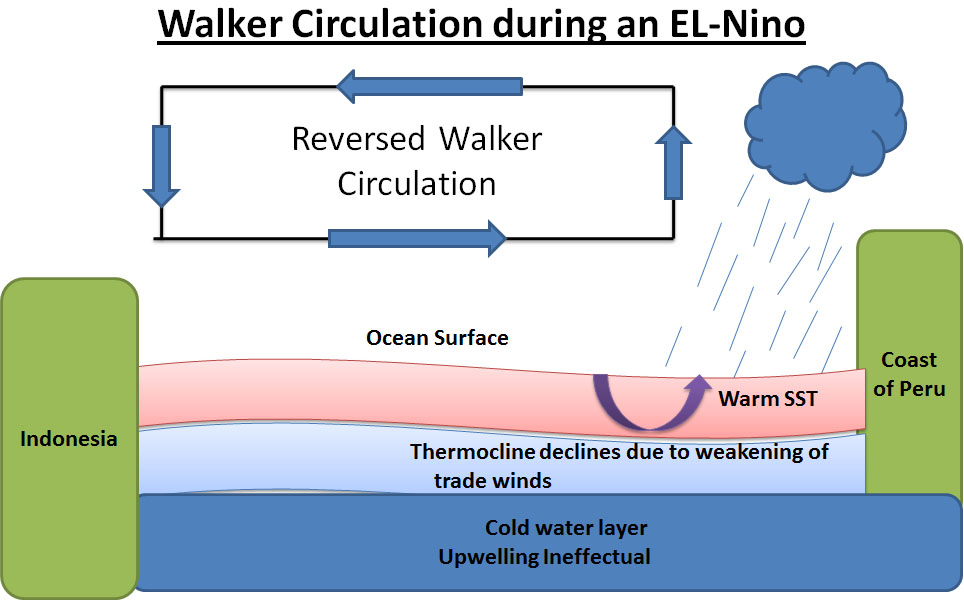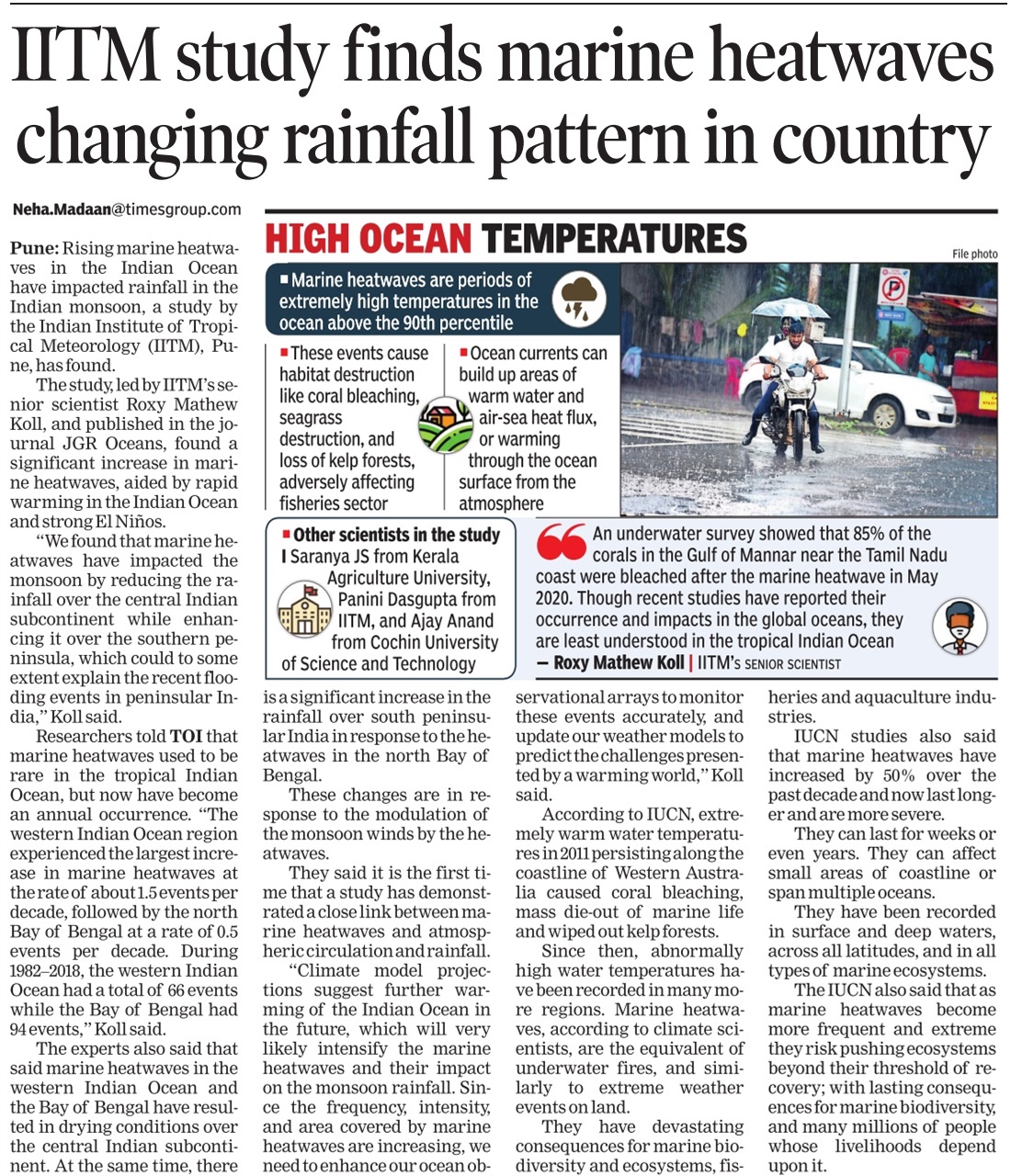| Ritika Kapoor | ||
 | MSc Thesis [2014]: Indian Ocean Warming and its effect on the southwest Monsoon [pdf] Affiliation: Department of Environmental Sciences, Fergusson College, University of Pune Publications: | |
| Award: Best Poster Award (out of 80 scientific posters) for “The curious case of Indian Ocean warming“, at the National Conference on Climate Change: Impacts, Adaptation, Mitigation Scenario and Future Challenges in Indian perspective, Delhi University, March 2015. |
| |
| Synopsis: Our study examines the cause of rapid warming over western Indian Ocean due to increasing number of El Ninos, and the subsequent effect on the rainfall variability over the Indian subcontinent. The zonal atmspheric (Walker) circulation in the Pacific is connected to the circulation over the Indian Ocean/Monsoon domain. The schematic below shows the anomalous shift in this Walker circulation over the Pacific, during an El Nino. Such a shift in Walker circulation weakens the monsoon winds over the Indian Ocean, which means less evaporation and more warming. We noticed that the skewness (frequency and magnitude) of El Ninos have increased during recent decades (a possible reason is greenhouse warming). Meanwhile, the La Nina events which drive the Pacific anomalies in the opposite direction, does not seem to have a ‘significant’ role in changing the surface temperatures in the Indian Ocean. i.e., the role played by the quasi-periodic El Ninos and La Ninas are asymmetric. This skewness and asymmetry leads up to a larger pile-up of heat over the Indian Ocean, which unlike the other oceans is land-locked, and has a restricted ocean circulation to vent out its heat.
| ||






